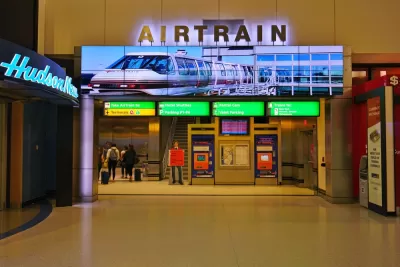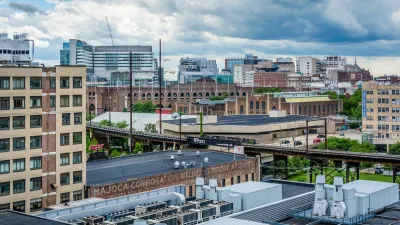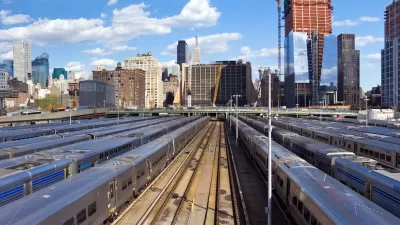The report recommends making displacement prevention a more central component of land-use policy.

"Displacement is often reported as individual battles over affordable housing or new development," notes Audrey Wachs in The Architect's Newspaper. But a new report from the Regional Plan Association takes a wider lens on the ongoing trend of displacement in the tri-state area around New York City.
Pushed Out: Housing Displacement in an Unaffordable Region found that in "desirable, central city neighborhoods," the number of households earning less than $100,000 a year has diminished by 2 percent, while the prevalence of households making over $100,000 has increased by 11 percent.
Data shows that throughout New York metropolitan area, wealthier (and whiter) people are replacing people of color in dense, central city neighborhoods with good transit access. There are, the RPA estimates, 990,000 people in the region who are at-risk of displacement; more than two-thirds of this group are Black or Latino.
Some municipalities have taken measures to curb the gentrification spurred by transit-oriented development; Jersey City, for example, has begun offering incentives for residential development outside of transit-rich areas. But the study notes that it can be difficult to fund affordable housing when federal standards for "affordability" don't align with local needs, and recommends other policy approaches cities could take to ensure affordability and prevent displacement, Wachs reports.
To ease the rising cost of housing and keep low-income residents in place, Pushed Out proposes policies like deeper rental subsidies, broader affordability ranges, centering displacement risk into land-use, and more legal protections for tenants, especially around eviction prevention and in areas outside of New York City where rent protections are weak or non-existent.
FULL STORY: A new report shows how sky-high housing costs fuel displacement in the tristate area

Rethinking Redlining
For decades we have blamed 100-year-old maps for the patterns of spatial racial inequity that persist in American cities today. An esteemed researcher says: we’ve got it all wrong.

Planetizen Federal Action Tracker
A weekly monitor of how Trump’s orders and actions are impacting planners and planning in America.

California High-Speed Rail's Plan to Right Itself
The railroad's new CEO thinks he can get the project back on track. The stars will need to align this summer.

San Francisco Muni Raises Fares a Second Time
A 10–cent fare hike for adults is part of the agency’s plan to chip away at a growing budget deficit.

Electric Grid Capacity Could Hamstring EV Growth
Industry leaders say the U.S. electric grid is unprepared for the increased demand for power created by electric cars, data centers, and electric homes.

Texas Bill Supports Adaptive Reuse in Commercial Areas
Senate Bill 840, which was preliminarily approved by the state House, would allow residential construction in areas previously zoned for offices and commercial uses.
Urban Design for Planners 1: Software Tools
This six-course series explores essential urban design concepts using open source software and equips planners with the tools they need to participate fully in the urban design process.
Planning for Universal Design
Learn the tools for implementing Universal Design in planning regulations.
City of Camden Redevelopment Agency
City of Astoria
Transportation Research & Education Center (TREC) at Portland State University
Regional Transportation Commission of Southern Nevada
Toledo-Lucas County Plan Commissions





























